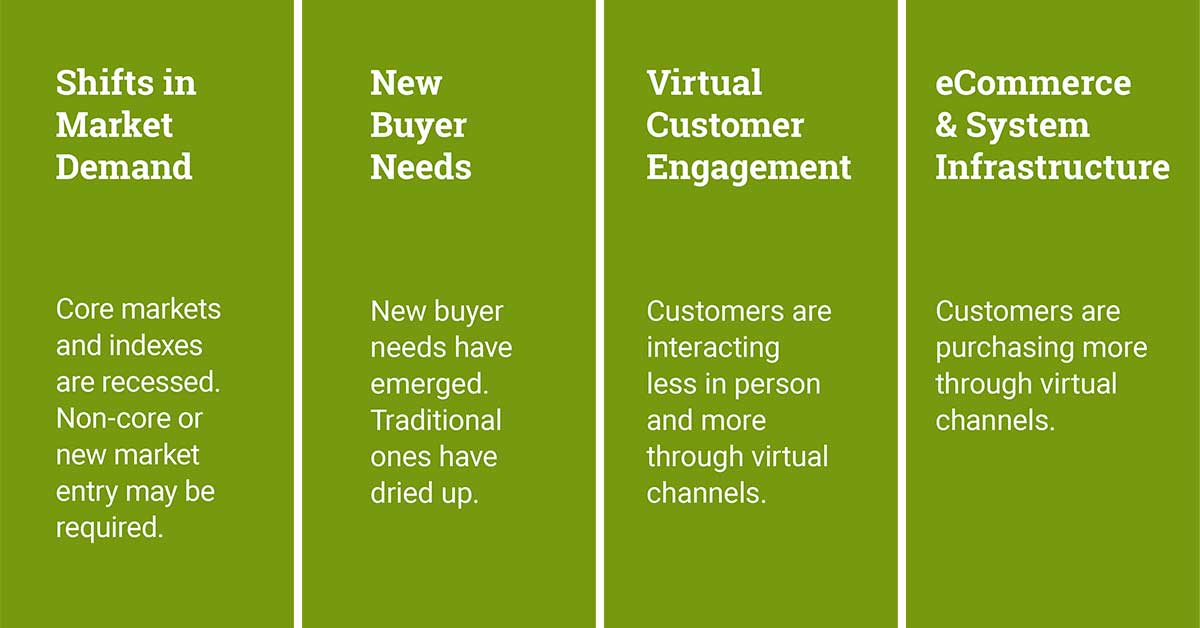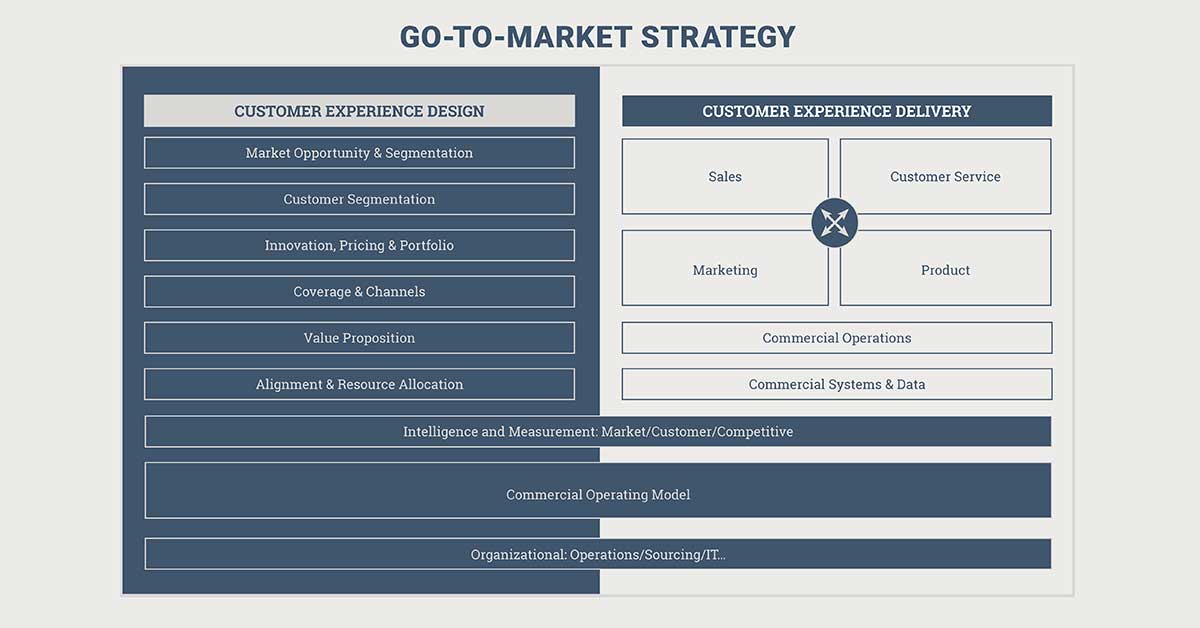Accelerating Out of the Crisis: Winning Market Share by Reengineering Your Go-To-Market Strategy
By James Dorn, President
You can blame COVID all you want, but the transformative changes required for manufacturers to compete in today’s post-crisis landscape were going to happen eventually. The pandemic just happened to be the incredibly urgent and completely unexpected accelerant for these changes. And as with any major disruption, the ability to achieve growth during and after the crisis will belong to those who can innovate rapidly and keep up with evolving industry expectations.
As we continue to navigate the behavior of the virus, it would be a mistake to see the rollout of vaccinations as a return to normal. So much in our lives and businesses won’t ever be the same, and previous go-to-market (GTM) strategies and commercial operating models are among the top of that list. But while there is still a multitude of questions around COVID and its aftermath, here’s what we do know:
- Legacy commercial strategies and operating models for manufacturers are far less effective than just a year ago and will remain so moving forward
- Companies need to embrace the “total customer experience” to design and deliver incremental end-user value
- Building an integrated GTM framework for driving profitable revenue growth is integral to success in today’s new environment
Your GTM is the lifeblood of your manufacturing company’s growth strategy. By bringing internal forces together to create a holistic strategy that aligns the organization in sturdy support of your growth vision, you put your business in a much better position to outmaneuver the competition.
If The New Normal Still Feels New to You, You’re Already Behind
Manufacturers who understand and act on this will have ample opportunities for growth, but it’s important to remember that your GTM isn’t a comprehensive strategy if it only addresses your route to market or where you sell your products. Instead, it should act as an integrated blueprint for achieving your business’s big-picture growth goals. And to succeed in the Not-So-New-Anymore Normal, businesses must have the agility to:
- Adapt their core offering to meet shifting buyer needs
- Identify and quickly address new opportunity areas being created by the changing landscape
- Build a foundation for post-crisis growth to remain competitive in the recovery period ahead

If your company is still viewing the pandemic crisis as a short-term situation and not considering the lasting long-term changes taking place across the industry (with many more to come), you’re tethering your business to an outdated operating system. The fact is, changes that were probably considered optional before the pandemic hit are now mandatory to survive—much less thrive—in the new world.
With every manufacturer now experiencing volatility across their supply chains of parts and raw materials, and as we see that the disruption won’t be subsiding anytime soon, it can seem natural to want to burrow into “safe” legacy paradigms. But manufacturers who can adapt their operations—reimagine their business going forward—are more likely to emerge from this crisis stronger.
An Integrated, Strengthened Approach to Post-COVID Growth
That’s why your GTM strategy can’t be just a description of the process by which your organization takes products to market. It should be an extension of your overarching growth vision, offering a play-by-play game plan for how your organization will work together to meet its high-level goals.
- In this rapidly evolving environment, B2B manufacturers need to be asking themselves:
- Are we in a position to enter markets with accelerating demand to attract new customers?
- Do we need to start producing products that today’s buyers are seeking in volume?
- How can product management, sales, marketing and customer service teams act as one to deliver a compelling buying experience?
- Should we shift more selling responsibilities from field sales to inside sales and digital selling teams?
- Is now the time to build the infrastructure to capture more revenue through digital commerce?
- Should we consider offering a direct-selling route to market to accommodate buyer preference?
- Do we have a growth system or committee in place to focus on customer experience design and delivery?

Often when a manufacturing company sets an enterprise-level GTM strategy, it remains unchanged for a long time. Well, in the understatement of the millennium, times have changed. While manufacturers continue to grasp the scale of the new challenges they face, they must also take action to change how they do business—or risk getting left behind. Leaders at manufacturing and distribution firms must pivot from legacy models into building an integrated GTM framework for driving revenue growth in this new landscape.
How Will Your Team Pivot To Drive Revenue Growth In This New Era?
A good start is to get individuals and teams committed to continual change and embrace the use of active change management practices. For organizations that want to thrive during and after this crisis, the path to growth starts with a cultural change that asks every individual to embrace agility, open-mindedness, and an eagerness to innovate new solutions. Because organizations don’t change, people do.
General steps to laying a strong foundation for change include:
- Identify the risks involved with your new GTM and map out a smart change management plan
- Establish buy-in with key stakeholders
- Communicate your plan for change to your entire team
- Actively remove barriers and demonstrate what “good” looks like
- Repeat
As the COVID-19-related disruption continues to morph from one new normal to another, manufacturers will need the ability to transition their business and operating models quickly and, in some cases, radically. To move forward from thinking about business continuity to developing a new-era strategy for growth, you’ll need to adapt your commercial operating model to suit a constantly changing world. Your GTM will be your guide as you move forward to identify what markets you serve, what customers you target, what products solutions you offer, your routes to market and what your value proposition will be.
Dorn’s team of product, marketing, sales, customer service and technology practitioners run alongside commercial teams to plan, execute and deliver higher-margin revenue growth—faster and without increasing fixed costs. Our DEMAND+ variable-cost service provides firms with additional personnel and a proven methodology for driving customer growth by helping them acquire, grow and retain customers more effectively.




